An Introduction to Coolant’s Beehive
“Beehive Coolant” is a product of Ant Studio designed by Coolant (the research and product wing of Ant Studio), and it is a functional and traditional alternative to energy-intensive cooling and air purification solutions.
This zero-energy air conditioning system combines ancient traditional techniques with modern mud technology to cool the air without the need for electricity. It was inspired by the vernacular methodology of cooling called “evaporative cooling“. Using traditional earthenware pots that are soaked with water, the hot air passes through the cylinders and turns into cool air because of the moisture inside the cylinder. [1] The idea of the architect “Monish Siripurapu” (founder of Ant Studio) was to imitate nature in a manner to make it more efficient for the users. [5] He came across this system at a request from a client, Deki Electronics in Noida, who wanted a solution for his factory, which was radiating too much heat, which was not good for the workers working there.
The design of this system is eco-friendly; it doesn’t have any plastic, has zero impact on the environment, and perfectly suits cooling down outdoor working conditions in the city. [1]
History
Our ancestors had solutions for every problem; that is what I believe. They do have to survive in various climatic conditions and other environmental factors. “Evaporative cooling” which is an ancient Egyptian cooling technique, is used here for this system.
Egyptians used to fan the porous jar to get cool air. [See Fig. Below] The Romans used a similar concept and idea to cool their tents or houses by hanging wet, thick materials on the doors. The rich people at that time constructed water channels, transporting water along the walls of their houses, to reduce the inside temperature under extremely hot climatic conditions. These ideas were analyzed in detail and combined with modern technology to make this beehive coolant. [1]
The concept of evaporative cooling is based on the principle that when water evaporates, it absorbs heat from the surroundings, which results in a cooling effect. As we all know, the Egyptians were known for their advanced architectural and engineering techniques. They developed different types of methods to make their lives comfortable in any kind of climatic condition.
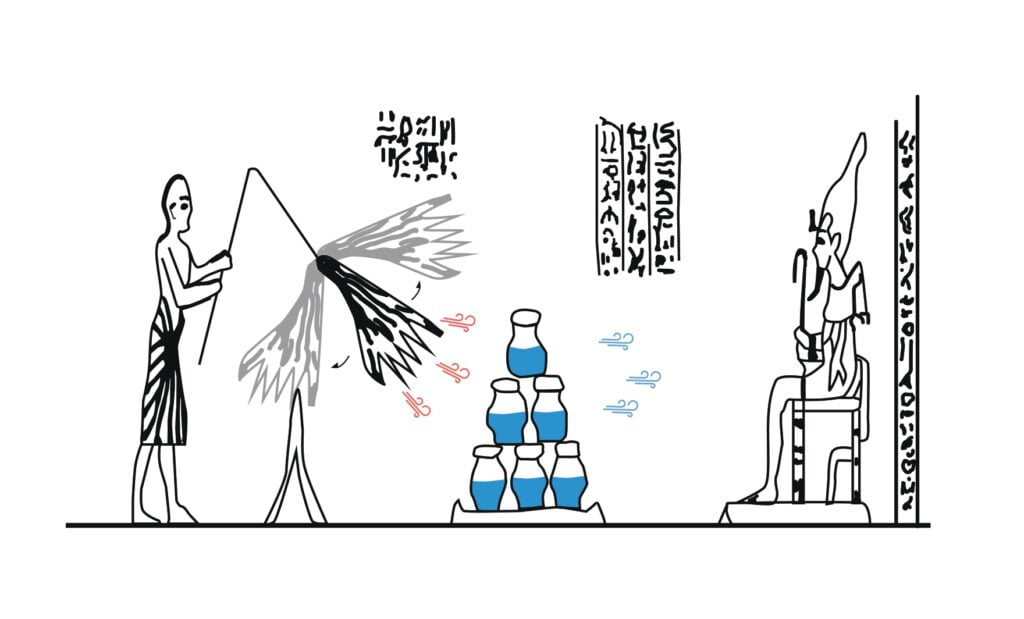
Inspiration and Design Idea
The design of the system was inspired by the structure of a beehive (a structure that is made by bees to house their colony) and an ancient Egyptian technique called “evaporative cooling”. This design used environmentally friendly elements to construct an aesthetic piece of art. It is a functional, and a visually appealing system. [1]
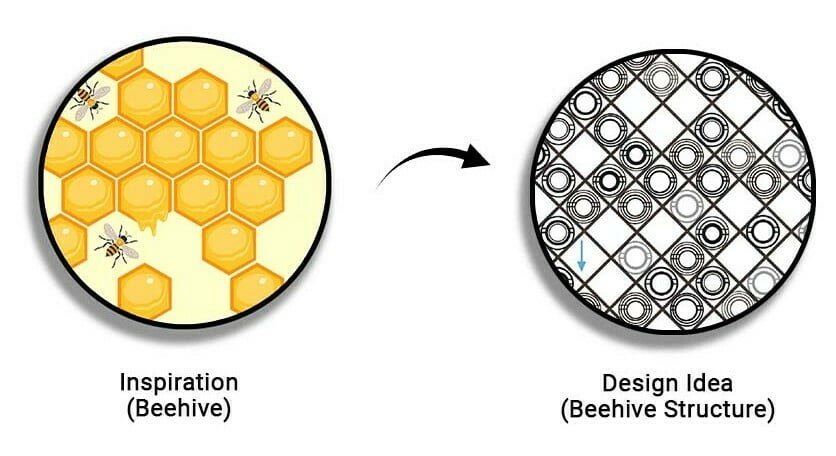
With the help of computational fluid dynamics and computational analysis, the shape and form of each of the terracotta cylinders were finalized. [2] The closeness in the design of the structure of the beehive was ready to be functional, with the cylinders forming the desired pattern and look. The use of a cylinder also provided a larger surface area. That helped in maximizing the cooling effect inside the tube and release fresh, cool air. [1] Terracotta has always been used in Indian households for keeping the water cool, and it cools the air as well. [2]
Installation and Working Process
The design of the beehive coolant consists of four important components: a steel frame, terracotta cylindrical tubes, a water pump, and a tank. A beehive (outer structure)-like shape is designed with a steel frame to provide support to the tubes, and then the terracotta cylinders or cones are placed on the frame to form a beehive-like structure. These are then placed over the water tank, and at last, a water pump is installed to pump the water over the cylindrical tubes.
Working Process
The terracotta tubes are stacked vertically on the steel frame in front of a source of air. Using the principles of a beehive, they maximize the surface area needed for cooling. Then the water is passed through the cylindrical tubes from the top, and the water is soaked by the tubes. When the air passes through the tubes, it becomes cool because water is poured on them. The tubes soak up the water and slowly release the moisture, which results in evaporation, which cools the surrounding area.
The water molecules stick with the clay molecules, keeping the clay wet and cool for a longer period. The hygroscopic qualities of clay help cool materials. The cones are fired at a mid-level temperature to ensure that the hygroscopic quality of clay is not eradicated. [2] The materials were chosen after carefully studying their properties and behaviors. [1]
The water passing through the tubes is collected in the tank attached below, where a water pump is installed, which re-circulates the water to the top, and the process continues. The installation uses a minimal amount of electricity to pump the water. But it also has a functional aesthetic and high paybacks for the user. [2]
This traditional solution is truly amazing, eco-friendly, and artistic at the same time. The making of this system involves traditional craftsmanship by local craftsmen. It doesn’t require high maintenance and is a sustainable and cost-effective alternative method that involves porous terracotta tubes, which inherit cooling properties, that will help in converting hot air into a pleasant cool breeze.
Not only does the installation of this system deliver the solution in a simple manner. But it can also be used on a large scale with all the functional alternatives, interpreted as an art installation. [1]
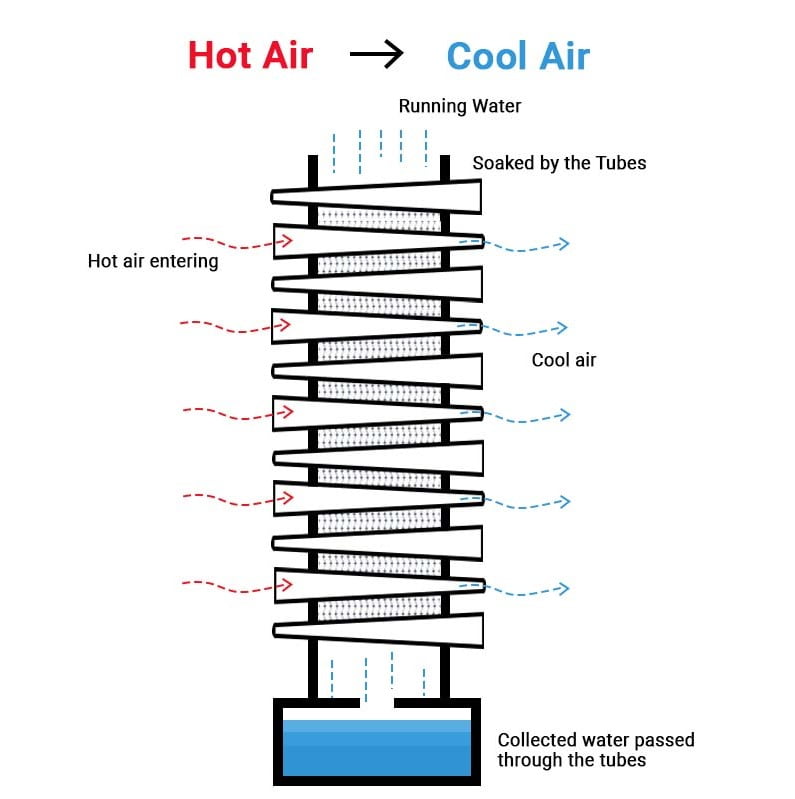
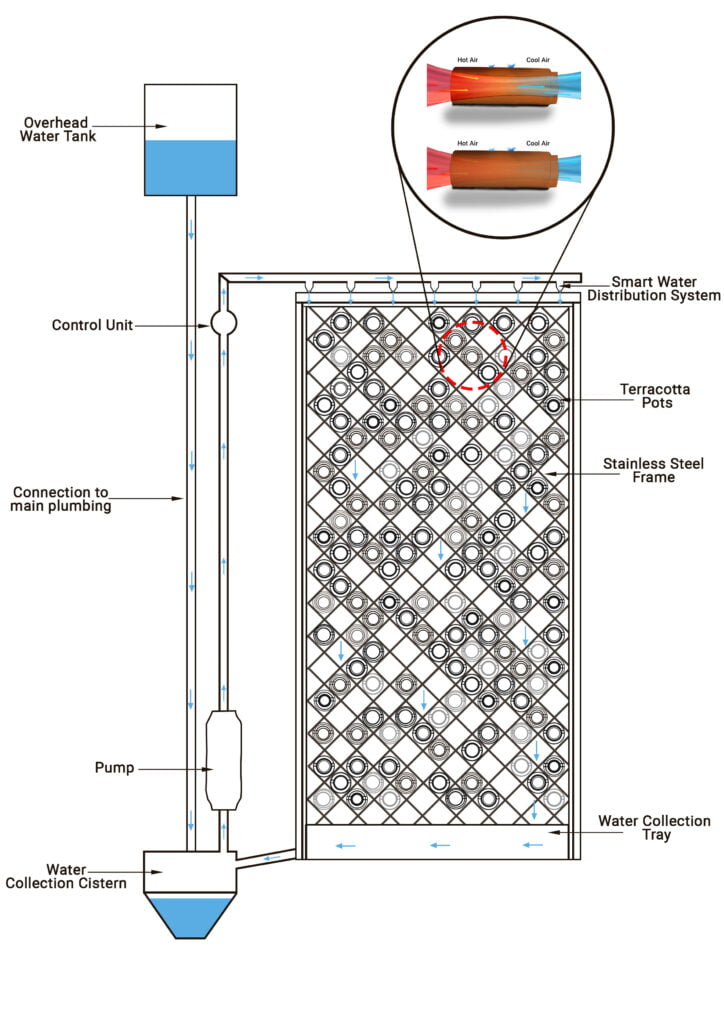
Benefits of having Beehive Coolant
To live happily in a healthy environment, we need clean and fresh air, natural resources, and a non-toxic environment. Beehive Coolant can become an essential part or an alternative sustainable solution to provide cool air at the cost of the immediate environment without harming it.
- This system can reduce the current temperature to 6 to 7 degrees below the internal temperature. [5]
- Temperature differences can be achieved by maximizing the velocity of air. [1]
- Beehive can save energy by about 15 to 30%.
- It can save costs by about 5 to 10%. [3]
- Moreover, the use of locally available eco-friendly materials and recycled water along with reusable steel makes it a cost-efficient solution.
- This system requires minimal electricity (for the water pump). The water requirement is also minimal since the water is circulated and pumped over and over again when the installation is in use. [1]
- With the widespread use of this concept and idea. It may even generate employment for potters and save a fading, traditional art form. [2]
- It can reduce carbon footprints and also achieve a net zero solution.
- It can be installed easily in residential, commercial, institutional, industrial buildings, etc.
- This beehive coolant can also be installed as a building façade that will exactly work like other installation.
To read a report by ant studio, comparing this method with the traditional method, Click here
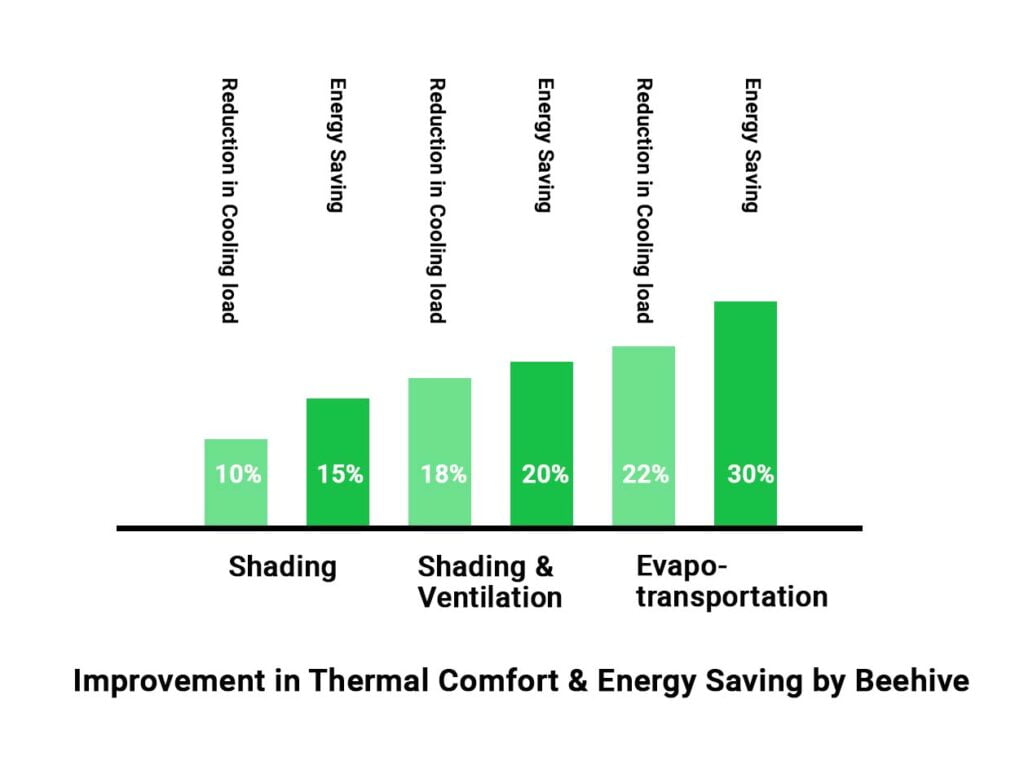
To read the whole research paper by ant studio, Click here
Design Variation and Future Possibilities
The beehive’s design is adaptable; it can be fitted into any accessible space. Several further experiments were carried out on this system, and numerous possibilities were investigated. With each experiment, the design evolves, making it more effective for commercial and home applications. More information about this coolant façade can be found on their website.
They are also working on a personal cooling device. It is one foot in diameter, and it also has a small fan in the middle. That will consumes barely any energy for that. So it can cool up to a radius of 4 to 5 feet around a person. [5] They have successfully installed this Beehive system in 20 different locations, including factories, residents, etc. [6]
The installation can be fully converted to a zero-energy prototype. That only requires a manual pouring of water over the terracotta tubes once or twice a day. This can be done in areas where the electricity demand is low, but it may not be an ideal solution for everywhere. [1]
The UN has also recognized this traditional and modern technological solution. It was among the 12 winners of the UN’s Asia-Pacific Carbon Lifestyle Challenge. [5]
Why do we need these kinds of traditional solutions?
In India, the building sector consumes 40% of total electricity consumption, which is expected to rise to 76% by 2040. [CSE 2014] Air conditioning demand in India is expected to rise from 3.8 million to 6.2 million units per year by 2020–21. [2017, Ozone Cell] ‘With the planet’s average surface temperature rising every year by 0.9 degrees, we have now reached what we call the cooling paradox. [6]
If we continue to go like this, then 45% of the total amount of electricity generated will be consumed by air conditioners. The more we use electricity, the more fossil fuels will be used to generate it. [5] We need to think about it on a larger scale; otherwise, there will be a lot of troubles in the future.
Innovative solutions like these will help curb India’s rising energy demands.
Would you use such an eco-friendly AC in your place? Let us know in the comment section…










2 Responses
Yeah, We need to think about using this kind of innovative solutions now. Thanks for this blog…
Thank you for your thoughtful comment! I’m glad you found the blog helpful. Innovative solutions are indeed the way forward.